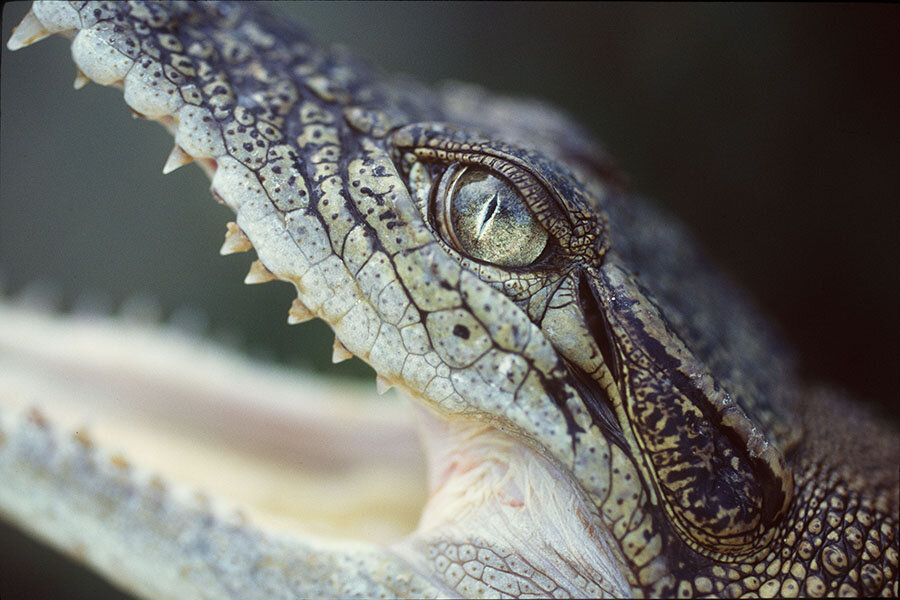Look up. Is that a crocodile?
Loading...
Imagine a crocodile perched on a tree branch.
It might sound unreal, but according to a new study carried out by an international group of scientists and published in the journal Herpetology Notes, certain species of crocodiles are adept at climbing trees. In fact, the reptiles could climb more than 13 feet high in a tree and almost 17 feet along a branch. Some could climb as far as the trees' crowns, according to a press release from the University of Tennessee.
"Climbing a steep hill or steep branch is mechanically similar, assuming the branch is wide enough to walk on," the authors wrote. "Still, the ability to climb vertically is a measure of crocodiles' spectacular agility on land."
It goes without saying that crocodiles do not resemble most arboreal animals. Lead author Vladimir Dinets, a research assistant professor in the University of Tennessee's Department of Psychology, told the Monitor that the reptiles are are not particularly flexible, nor are their claws particularly curved like most tree-climbing animals.
But "crocodilians are capable of entering arboreal environments within the limits of their locomotory abilities, and in some cases might spend considerable time high above ground," the authors wrote in the paper titled "Climbing behaviour in extant crocodilians."
The researchers observed crocodile species on three continents — Australia, Africa, and North America.
They found that four species of crocodiles – Australian freshwater crocodile, American crocodile, Central African slender-snouted crocodile, and the Nile crocodile – climbed trees at night or during the day, but their climbing ability varied by their sizes. For example – smaller crocodiles could climb higher compared to the bigger ones.
"The most frequent observations of tree-basking were in areas where there were few places to bask on the ground, implying that the individuals needed alternatives for regulating their body temperature," the authors wrote. "Likewise, their wary nature suggests that climbing leads to improved site surveillance of potential threats and prey."
Researchers believe that climbing behavior among crocodiles is primarily driven by two conditions – thermoregulation (ability of an organism to maintain its internal body temperature) and surveillance of habitat – mainly because the crocodiles perched on trees seemed wary of being approached, jumping or falling into the water when an approaching observer got within about 30 feet.
"The fact that at least some extant crocodilians are capable of climbing arboreal vegetation despite lacking any obvious morphological adaptations for arboreality must be taken into account by paleontologists trying to elucidate behavioural clues from the morphology of fossil taxa," according to the paper.
In other words, if you look at fossil remains, like – bones, of crocodiles you cannot say if they climbed trees or not, Dr. Dinets says.
This study can help those studying extinct crocodiles or other Archosaurian taxa, said Dinets.






